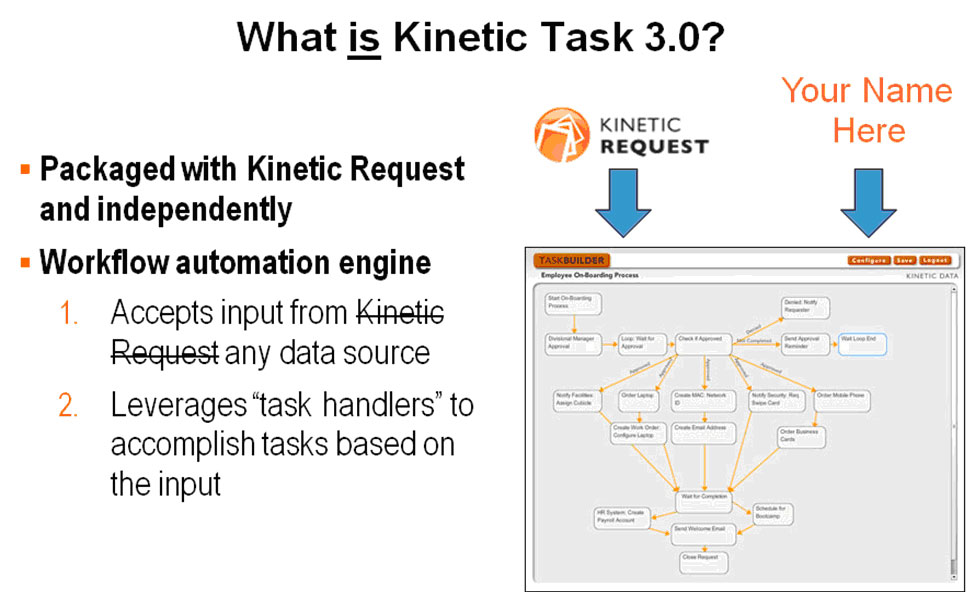What’s New at Kinetic: Building Smart in 2026
At Kinetic, we believe the future of Business Process Management isn’t bigger—it’s smarter.
Ben Christenson, one of the primary architects and developers for Kinetic Task, is presenting “What’s New in Kinetic Task 3.0” today at the 2nd annual KEG (Kinetic Enthusiasts Group) Conference. For...

Ben Christenson, one of the primary architects and developers for Kinetic Task, is presenting “What’s New in Kinetic Task 3.0” today at the 2nd annual KEG (Kinetic Enthusiasts Group) Conference. For those of you who couldn’t make it to the Denver event, here are some highlights of his presentation.
One of the biggest questions we got during KEG 2012 was: “When can I use Kinetic Task to automate workflows outside of Kinetic Request?” The answer is right now with the release of Kinetic Task 3.0.
We’ve always had the long-term goal of making the Kinetic Task engine a kind of platform- and application-agnostic enterprise “glue” that provided a modular approach to workflow automation anywhere in the enterprise where automation could deliver real benefits. Our initial focus was on ITSM service request automation delivered through a Kinetic Request management portal. (That’s why we bundled Kinetic Task with Kinetic Request.) But interest at KEG 2012 in bringing the power of the Kinetic Task automation engine to other parts of the enterprise was so strong that we vowed to make Kinetic Task work with any application by the time KEG 2013 rolled around.
And I mean any application. Or at least any application that can trigger a call back into Kinetic Task based on some event, like a new or updated field in an application database, and automatically launch a task tree. The user experience won’t change. Task trees will still be built and processes configured in the same ways. But now tasks can be triggered from any application, not just Kinetic Request. That includes home-grown applications, which can be configured with Task Handlers and linked to Kinetic Task through an improved API.
So what can you now do with Task 3.0? When users learn of Kinetic Task’s radically expanded functionality, their imaginations ran riot. Just think of it—simplified business process automation in any nook and cranny of the enterprise where, in the past, the cost of the development effort couldn’t be justified. In HR, facilities management, sales and marketing, finance, logistics, operations, and customer service (indeed, just about any area of the business), you can leverage your familiarity with Kinetic Task to build automated workflows.

Several other enhancements have been made in Kinetic Task 3.0, including an improved API, easier installation, an improved admin console, and changes to Kinetic Security Language (KSL) to create a powerful new strategy for implementing business-logic-driven security policies. But the real difference is summarized by the slide above. Before, Kinetic Task only accepted input from Kinetic Request. Now, Kinetic Task 3.0 , which is still packaged with Kinetic Request but also available independently, has been opened up to allow any external source to start a task tree. That means it can backend any data source. And it can deliver process automation anywhere you want using the Kinetic Task knowledge and skills you already have.
Get in touch with me (Ben. Christenson[AT]KineticData.com) if you want to learn more.

At Kinetic, we believe the future of Business Process Management isn’t bigger—it’s smarter.

IT support automation uses software workflows, rule engines, AI/ML, and integrations to automate...

Business process reimagined is the strategic renewal of how work gets done by combining modern digital...